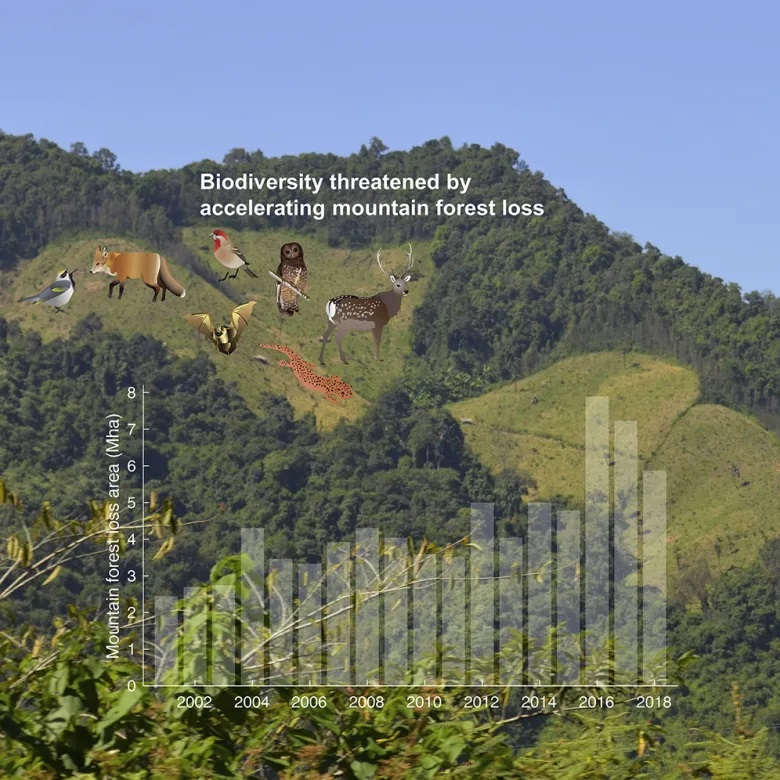Mountain Forests Being Lost At ‘Alarming Rate,’ Esp In Asia
Apr 19, 2023 | Pratirodh Bureau
A figure showing mountain forest loss area over time (Figure from He et al 2023)
More than 7% of all mountain forests have been destroyed during the past two decades, according to a new study published in the journal One Earth.
Using high-resolution satellite data and maps of mountain terrains, researchers found that 780,000 square kilometers (301,000 square miles) of mountain forest — an area the size of Texas or twice the size of Norway — were lost worldwide between 2001 and 2018.
The study notes an “alarming acceleration in mountain forest lost worldwide over the past two decades,” with rates of forest loss nearly doubling after 2010.
The study’s findings are a significant concern for biodiversity, as more than 85% of all bird, mammal and amphibian species live all or part of their lives in mountain forests. Many species have a limited range, making them highly susceptible to extinction even with minimal forest loss.
“Mountains have exceptionally high levels of biodiversity, and many of these species are dependent on forests for their survival,” study co-author Paul Elsen, a climate adaptation scientist at the Wildlife Conservation Society, said in a statement. “The high levels of forest loss we observed in mountains could be catastrophic for these sensitive mountain species.”
“The use of large-scale data such as remote-sensing satellite products are a great tool to monitor forest change in almost real time,” Marco Mina, a researcher at the Institute for Alpine Environment, Eurac Research, in Italy, who was not involved in the study told The Guardian. “However, we should be cautious to draw global conclusions based solely on remote-sensing products … A forest that is well managed through a careful planning process can still provide high levels of habitat for plants and animal species.”
The leading cause of deforestation in mountainous regions was logging, accounting for 42% of the loss, while wildfires were responsible for 29%, shifting or slash-and-burn cultivation for 15%, and permanent or semi-permanent agriculture for 10%.
In the tropics, forest loss was caused mainly by shifting agriculture, while in temperate regions it was forestry practices. In boreal areas, most of the forest loss was caused by fires.
The amount of forest loss also varied by region, with tropical mountain forests being lost almost three times faster than temperate forests and more than eight times faster than boreal forests. The study found that the expansion of farming into highland areas of Southeast Asia was a significant cause of this accelerated rate in the tropics. Between 2001 and 2018, more than half of all forest loss in the world occurred in Asia.
The researchers also found that protected areas help reduce mountain forest loss within their boundaries, particularly in high-biodiversity areas where farming and ranching are the leading causes of deforestation.
“It was encouraging to find that protected areas were associated with far lower relative forest loss rates within regions of high biodiversity,” Elsen said. “This provides evidence that continued management and investment in protected areas can conserve biodiversity that would otherwise be under much more significant threat from forest loss.”
The authors call for urgent conservation action, including, Elsen said, “increasing sustainable harvesting of forest commodities, making adjustments to supply chains to be deforestation-free, ramping up forest restoration initiatives, and creating collaborative partnerships with Indigenous Peoples and Local Communities leading to co-management of forests.”
This article is written by Liz Kimbrough and republished from Mongabay
